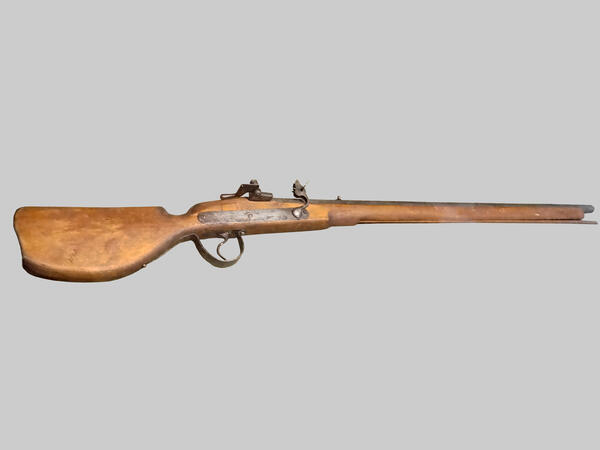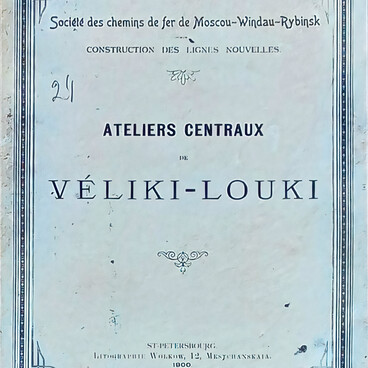The first firearm, the arquebus, originated in the middle of the 16th century and is the forerunner of the musket. Arquebuses were initially considered deadly and powerful, but actually these weapons turned out to be unreliable. The ammo that was used for them was too small in caliber and weight, just up to 20 grams. This was not enough to pierce the enemy’s armor or chain mail. And reloading the arquebus took so long that the invention of more effective weapons was only a matter of time.
The importance of the musket in the history of firearms is great. There are several versions of its origin. According to some reports, the first rifle with a long barrel and a matchlock was invented in Spain. Presumably, its creator was a certain Moqueto, who lived in the city of Veletra. The barrel length of the first musket, according to old records, was about 1.5 meters. In comparison with arquebuses, the caliber increased as well, up to 22 millimeters, and the weight of the charge for muskets was about 50 grams.
In the process of firing, more gunpowder was used, and therefore the bullet had greater acceleration and crossed a greater distance. This means that its destructive power had increased significantly: the charge easily penetrated plate armor and other armor common in infantry troops in the 16th century.
The first muskets could fire only from positions prepared in advance, since the weight of the weapon reached nine kilos, and it was very inconvenient to carry them. Loading a musket required skill and dexterity, and the strong recoil made the shooting process much more difficult. Muskets were massively used in the armies of Spain, France and Germany. Despite the drawbacks of this weapon, European soldiers became a menacing force.
The muskets used a trigger and firing mechanism. It was the appearance of the lock that prompted the development of all methods for ignition of gunpowder in firearms. Matchlock muskets remained in use in European armies for a long time, despite the simplicity of the design and the fact that this method of firing the rifle was far from ideal.
With the development and improvement of muskets, during the domination of the Spanish fleet in the sea, they began to be used on ships. Firearms provided powerful fire support in naval combat. Rifle and artillery volleys caused significant damage to the rigging to which the cargo was attached, to manpower and to the ship itself.
Muskets were especially popular in sea battles: their heavy bullets easily destroyed wooden ship structures. Shooting was accurate and crushing at close range, before boarding combat. In the second half of the 17th century, this type of weapon was gradually replaced throughout Europe by flintlock military rifles, fusils.
The importance of the musket in the history of firearms is great. There are several versions of its origin. According to some reports, the first rifle with a long barrel and a matchlock was invented in Spain. Presumably, its creator was a certain Moqueto, who lived in the city of Veletra. The barrel length of the first musket, according to old records, was about 1.5 meters. In comparison with arquebuses, the caliber increased as well, up to 22 millimeters, and the weight of the charge for muskets was about 50 grams.
In the process of firing, more gunpowder was used, and therefore the bullet had greater acceleration and crossed a greater distance. This means that its destructive power had increased significantly: the charge easily penetrated plate armor and other armor common in infantry troops in the 16th century.
The first muskets could fire only from positions prepared in advance, since the weight of the weapon reached nine kilos, and it was very inconvenient to carry them. Loading a musket required skill and dexterity, and the strong recoil made the shooting process much more difficult. Muskets were massively used in the armies of Spain, France and Germany. Despite the drawbacks of this weapon, European soldiers became a menacing force.
The muskets used a trigger and firing mechanism. It was the appearance of the lock that prompted the development of all methods for ignition of gunpowder in firearms. Matchlock muskets remained in use in European armies for a long time, despite the simplicity of the design and the fact that this method of firing the rifle was far from ideal.
With the development and improvement of muskets, during the domination of the Spanish fleet in the sea, they began to be used on ships. Firearms provided powerful fire support in naval combat. Rifle and artillery volleys caused significant damage to the rigging to which the cargo was attached, to manpower and to the ship itself.
Muskets were especially popular in sea battles: their heavy bullets easily destroyed wooden ship structures. Shooting was accurate and crushing at close range, before boarding combat. In the second half of the 17th century, this type of weapon was gradually replaced throughout Europe by flintlock military rifles, fusils.



